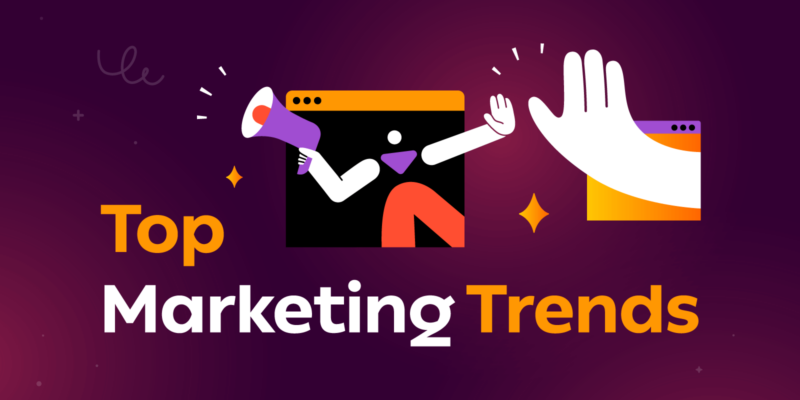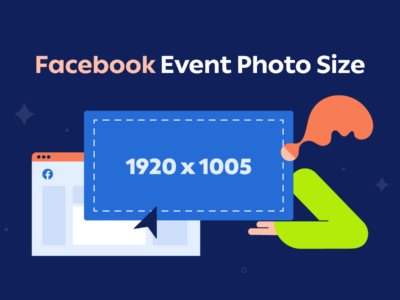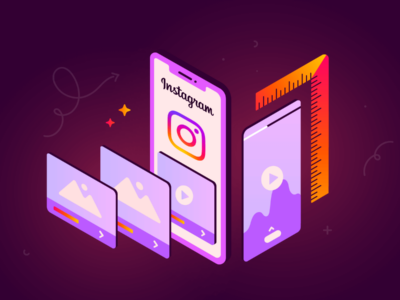We just concluded one of the most challenging yet fascinating years since 2000. Some tectonic forces are shaping the business environment and life in general. War, inflation, (hopefully) the last outbreaks of the Covid pandemic, and disruptions in the world food supply chain are some of the negative global factors.
But some important positive ones are also coming into force: AI is leapfrogging, and Generation Z is taking center stage as workforce, decision-makers, and consumers with purchasing power.
Hubspot’s State of Marketing Trends report summarizes the most important shifts perceived by marketers in 2022. It is worth noting that flexibility, data-driven decisions, creativity, customer experience, and communities are areas that suffered key changes in 2022.
2023 will by no means be shorter of changes.
Here are the top B2B marketing trends to watch if you are looking to stay ahead of the curve and to be effective in reaching your target audience:
- Generation Z coming of age
- Personalization at scale
- Video marketing
- Influencer marketing
- Generative Artificial Intelligence (AI)
- Marketing technologies (martech) streamlining
- Personal data privacy
1. Gen Zers Are Taking Over the Workplace
I’m starting my outlook into 2023 with this because it’s one of the fundamental forces that will shape the business environment in the upcoming years. Plus, it has ramifications in the other trends I will cover later.
Gen Z (born between 1997 to 2012) is fundamentally different from Millennials (born between 1981 and 1996), not only by being digitally native but also by having their early years synchronized with what was (probably) the peak of globalization. They don’t have other references, and the way they experience life has profound implications on their values and the way they think, work, make decisions or spend their money.
In 2023 Gen Z will be the most important shaping force of social media and online shopping, and marketers need to learn what makes the young generation of consumers tick.
TikTok is the most popular among Gen Zers (70% of Gen Z internet users will use Tiktok in 2023), but other social media networks, like BeReal, are also coming strong. These platforms are successful because they offer Gen Z what they crave: feeling welcome and safe.
According to Insider Intelligence, half of US social network users will purchase something via social media in 2023. The percentage of TikTok users who buy via the app has increased dramatically, and it will reach parity with Facebook and surpass Instagram in 2023.
Interestingly, search behavior is also changing. Google’s internal research shows that nearly 40% of US users ages 18 to 24 now start their searches on Instagram and TikTok. While most adults (especially in the US) start their search on Amazon when shopping online, those who start on TikTok grew from 11% to 21% QoQ.
2. Personalization at Scale
Targeted, personalized content and communication will be imperative in 2023. As buyers tend to disregard or even reject traditional B2B experiences, marketers must consider tactics from the B2C space that promote a more personalized customer experience. Providing the right content, on the right channels, at the right time will make the difference between winning and losing.
While, in theory, this sounds like a great idea, the implementation is not as straightforward. There is a high cost attached to it, and 54% of US and UK B2B marketers expect to spend more on content creation and strategy in 2023, according to Integrate and Demand Metric. Fortunately, help is on the way in the form of Generative AI and creative management platforms.
3. Short Video Format Will Be King
This comes as no surprise: video is a powerful and proven marketing tool. It is also the content of choice for Gen Zers, and it will only become more important in the coming year, especially short-form video content.
According to Hubspot’s State of Marketing Trends, 90% of marketers using short-form videos will increase or maintain their investment next year. On top of that, 21% of marketers plan to leverage short-form videos for the first time in 2023.
The short-form vertical video ads are also increasing in popularity, and there is an ongoing battle for reigning shorts between TikTok and YouTube. We actually conducted an experiment to see what is the best advertising platform for short-form vertical video ads and made the results freely available.
4. Influencer Marketing
Twitter estimates that 40% of their users made a purchase at some point based on an influencer’s recommendation, and 61% of users trust recommendations from an influencer. According to Businesswire, only 30% are likely to trust recommendations from a brand on social platforms.
But not all influencers are created equal, and marketers prefer to work with micro-influencers (counting between 1,000 and 10,000 followers) due to their higher engagement rate compared to macro-influencers and celebrities (which exceed 100,000 followers on all channels).
5. Adoption of Generative AI
AI is already being used in various marketing applications, from data analytics to personalized recommendations and content creation. AI is improving at an astonishing rate and is expected to play a larger role in marketing in 2023 and the coming years.
With the announcement of OpenAI’s ChatGPT, generative AI goes mainstream. But ChatGPT is not the only one. Multiple tools that use AI to generate text have picked up a lot of momentum this year. Though we’re not expected to turn over content production 100% to an AI, these tools enable content marketers to accelerate production and boost personalization.
You can read here an interesting point of view regarding the meaning of generative AI for art.
6. Martech Streamlining
With the inflation of marketing tools in recent years, many companies have acquired tech that they think will solve all their problems. However, economic conditions and tighter budgets mean that in 2023 marketers should streamline tech stacks for better performance and outcomes. Martech will need to be stripped down to achieve goals.
That being said, the investment in marketing technologies stack will continue to grow but at a slower pace (12.4% in 2023 vs. 21.2% in 2022, according to Insider Intelligence reaching a global spend of $8.51 billion by 2024, up from $6.59 billion in 2022). The main challenge marketers face is the integration of their toolset with those of other teams, especially sales and customer success.
With a focus on revenue rather than simply leads, marketers rely more on customer relationship management (CRM) systems. According to recent data from Anteriad, 61% of marketers in the US and UK have a CRM in their martech stack. CRMs are traditionally owned by the sales team, but they are now essential to show attribution and marketing’s contribution to revenue growth.
7. Personal Data Privacy
Privacy regulations will advance in 2023 with two important bodies of law: the California Privacy Rights Act (CPRA), which took effect January 1, 2023, and the federal American Data and Privacy Protection Act (ADPPA) which is expected to be considered by the US Congress in 2023.
The era of “Accept all cookies” is getting close to its end, as user consent will not be enough, and stricter rules will define the acceptable use cases for personal data.
This is a competing trend for content personalization and is already generating tension within the advertising industry. Marketers and advertisers are looking for alternative personalization options that respect the privacy of prospects: channel, context, and micro-segment personalization.
They will select martech tools that help them navigate privacy and regulatory changes and manage data across multiple touch points. Data clean rooms is another “privacy first” option for targeting advertising that gained traction and 2022 and looks promising for 2023.
Learn more about whether ADPPA will be changing the rules for marketers.
Wrapping Up
The marketing landscape is constantly evolving, so we’re used to seeing trends come and go, but the changes 2023 brings can affect businesses in the long run. This is why staying up-to-date with the latest trends is essential for companies that want to be at the top of their game.
Content personalization and video marketing are essential to reaching the right customers and generating revenue.
However, just as important is personal data privacy. Not keeping up with the latest regulations can severely impact businesses and affect their growth. Alternatively, disregarding AI advancements could translate into a technological setback.
All the trends listed in this article have a part to play in ensuring a business’s success, which is why you should consider including them in the marketing strategy for the current year.








